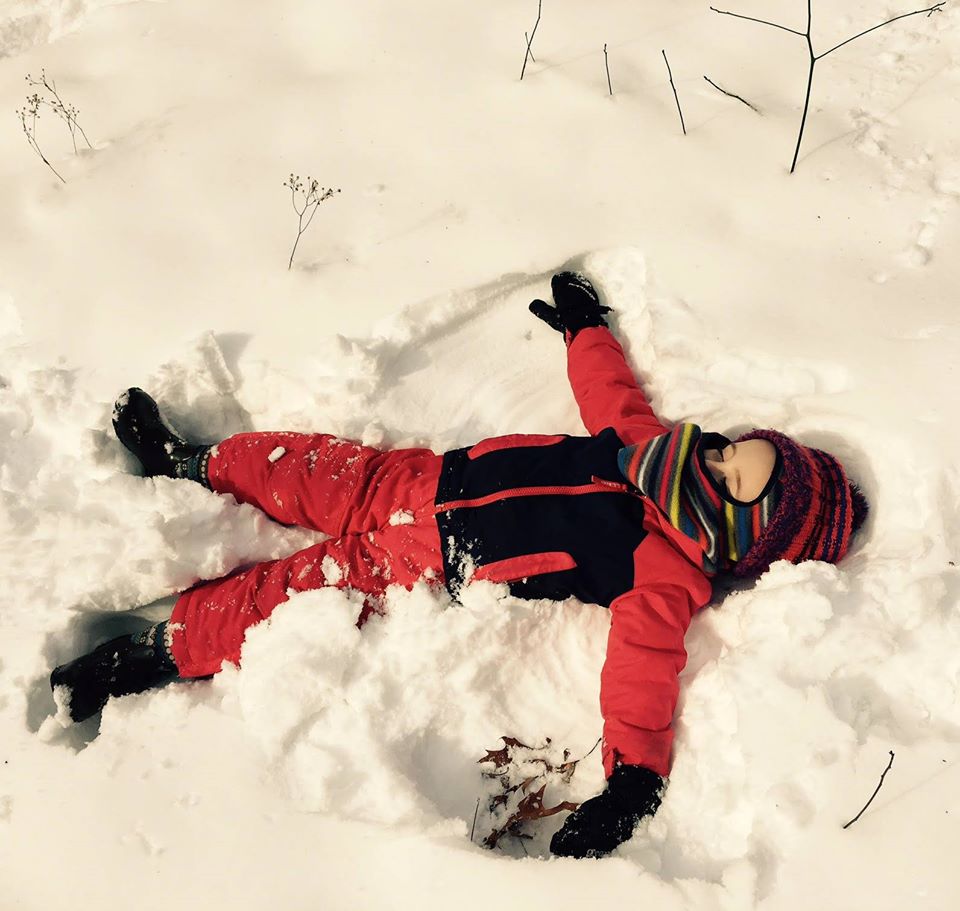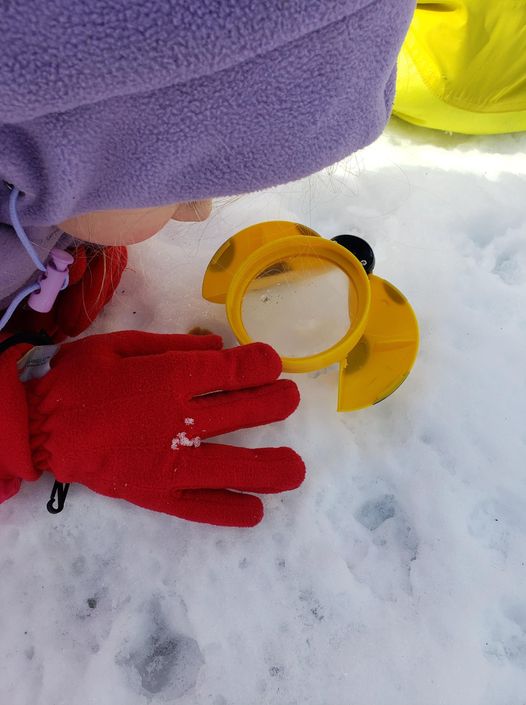By Elissa Bass
The Norwegians call it Friluftsliv. Translated, it literally means “free air life,” and it encourages people to get outdoors as much as possible all year round.
The Denison Pequotsepos Nature Center calls it, well, any day of the week, as the organization has spent the last 74 years encouraging young and old alike to get outside every day – no matter the weather – and experience nature. This is perhaps best personified at the Center’s Nature Preschool, where young children start their education in the woods and meadows of Mystic.
As the world, nation, state and region have grappled with the ripple effects of the coronavirus pandemic in 2020, and the strict limitations placed on indoor activities, the Nature Center has seen increased activity on its hundreds of acres and miles of trails. As winter sets in, the Nature Center encourages everyone to continue their relationship with nature and the outdoors.
And, it’s safe. According to the Iowa Department of Public Health’s Child Care Weather Watch guidelines, kids can be outside indefinitely when the temperature is over 32 degrees and winds are lower than 15 miles per hour. Kids should be more closely monitored at lower temperatures or with stronger winds.
“Right now, our preschool looks more like a Forest School, where we spend almost all our time outside in most kinds of weather,” said Preschool Director Pauline Gaucher. “The children have been able to practice socialization skills that they cannot get from a screen by gathering in the safest possible setting during the pandemic. The woods and trails have literally been our classroom where rich social, emotional, cognitive and exploratory learning is occuring.
“There are a few things that are making this as comfortable as can be for us,” she continued. “How to dress properly is the first thing we have been promoting. Of course, children are not always on board, but our parents have been rock stars with providing this first ‘layer’ of success.”
“There’s no bad weather, just bad clothes” is one of the favorite sayings among Nature Center staff. With that in mind, here are some tips for dressing to enjoy the outdoors:
It’s all about the layers. How do you keep your child warm and dry, without over-bundling or restricting movement? Layers! When you dress your child in layers, you allow buffer zones of warm air to get trapped between garments, providing superior insulation. Layering several light garments has been proven to offer better protection than a single layer of heavy outerwear.
1. Start with a Moisture-Wicking Underlayer
Begin by dressing your child in long johns. Choose a quick-drying, moisture-wicking fabric, such as a polyester/rayon blend. Surprisingly, you should avoid cotton (one of our favorite indoor fabrics) because it absorbs perspiration and sticks to the skin.
2. Cover with an Insulating Middle Layer
Since the point of layering is to create insulating zones of warm air, it is important to choose the right mid-layer garments. Experts agree: for efficient insulation, nothing beats polyester fleece.
We recommend two-piece fleece separates for kids. Make sure they are loose fitting (so they won’t restrict movement) and light enough for layering. Avoid denim jeans, which can become quickly bogged down with water and snow.
3. Top with a Protective Outer Layer
The purpose of this outer layer is to keep warm air in, while keeping wind and water out. Whether you choose a two-piece parka/snow-pants combination or a one-piece snowsuit, we recommend that you look for high-performance fabrics such as those designed for skiers. These fabrics are tightly woven to keep the inner layers of warm air from blowing away from the body. Then they’re coated or laminated on the outside to create a barrier against moisture. At the same time, they’re breathable, allowing moisture to escape.
Accessories
Hats
We favor synthetic fabrics (like fleece), which are warm, lightweight and breathable. No matter which style of hat you choose, make sure it completely covers both of your child’s ears.
Mittens and Gloves
According to experts, mittens provide better warmth than gloves, because they allow more warm air to circulate around the fingers. When choosing mittens, look for elasticized wrists that keep out snow and wind, as well as longer cuffs for added warmth.
Socks and Shoes
Start with a good pair of winter sports socks. Experts recommend a blend of polyester (for wicking) and wool (for warmth). Remember, cotton tends to collect water and should be avoided for outdoor gear. Choose waterproof boots with an insulating layer; rubber and leather are both good choices. Make sure boots are roomy enough for winter socks.



